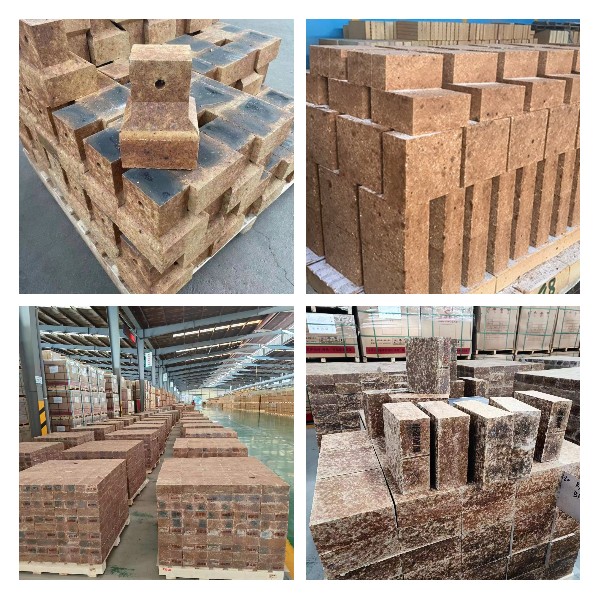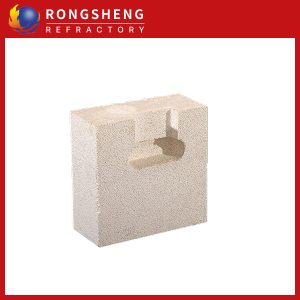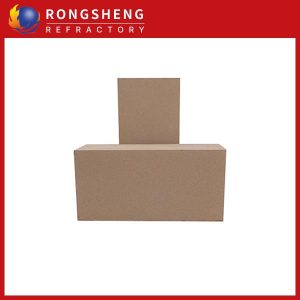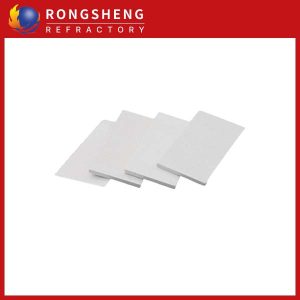อิฐซิลิคอนคาร์ไบด์มัลไลต์เป็นก้อนอิฐที่ถูกยิงประกอบด้วยมัลไลต์ (3Al2O3.2SiO2) และซิลิกอนคาร์ไบด์ (ซิซี) เป็นแร่ธาตุหลัก. อิฐซิลิกา-มัลไลต์มีความต้านทานอุณหภูมิสูงของมัลไลต์และความต้านทานการสึกหรอ, ความต้านทานการกัดกร่อน, และการนำความร้อนที่ดีของ ซิลิคอนคาร์ไบด์.

ตัวบ่งชี้ทางกายภาพและทางเคมีของอิฐวัสดุทนไฟซิลิกา
| ผลิตภัณฑ์ | AZM-1650 | AZM-1680 | |
| องค์ประกอบทางเคมี | sic+siO2 | ≥30 | ≥32 |
| อัล2O3 | ≥65 | ≥65 | |
| ความหนาแน่นเป็นกลุ่ม(กรัม/ซม3) | ≥2.65 | ≥2.70 | |
| ปรากฏความพรุน (%) | ≤19 | ≤19 | |
| ความแรงของการบดเย็น(เมปา) | ≥90 | ≥100 | |
| การหักเหภายใต้โหลด | ≥1650 | ≥1680 | |
| ความต้านทานแรงกระแทกด้วยความร้อน | ≥15 | ≥20 | |
การใช้งานหลักของอิฐซิลิคอนคาร์ไบด์มัลไลต์

เหมาะสำหรับเขตการเปลี่ยนแปลง, โซนอุ่น, ท่ออากาศระดับอุดมศึกษา, เครื่องอุ่นล่วงหน้าห้าขั้นตอน, และรางระบายน้ำออกจากเตาปูนซีเมนต์แบบหมุน.
การเปรียบเทียบอิฐซิลิคอนมัลไลต์และอิฐแมกนีเซีย-อลูมินาสปิน

อิฐทนไฟของซิลิกามัลไลต์เหมาะสำหรับเขตการเปลี่ยนแปลงของเตาเผาซีเมนต์และ อิฐแมกนีเซีย-อลูมินาสปิเนล. เมื่อเทียบกับอิฐแมกนีเซีย-อลูมินาสปิเนล, พวกเขามีประสิทธิภาพด้านต้นทุนที่สูงกว่า. เมื่อเทียบกับอิฐแมกนีเซีย-อลูมินาสปิเนล, อิฐซิลิคอนมัลไลต์มีข้อดีของการนำความร้อนต่ำ, เสถียรภาพการเปลี่ยนแปลงอุณหภูมิที่ดี, และประสิทธิภาพที่มีต้นทุนสูง.
เมื่อเทียบกับอิฐซิลิคอนคาร์ไบด์มัลไลต์, Magnesia-Alumina Spinel อิฐมีข้อได้เปรียบของความต้านทานการกัดกร่อนที่แข็งแกร่งและข้อเสียของการนำความร้อนสูง. ในระบบการแปรรูปเตาเผาแบบโรตารี่ของเสีย, อิฐแมกนีเซีย-อลูมินามีอิฐมีความต้านทานการกัดกร่อนของอัลคาไล-ซัลเฟอร์ที่ดีกว่า. , ดังนั้นในเตาเผาแบบหมุนขนาดใหญ่, อิฐแมกนีเซียม-อลูมินาสปินยังส่วนใหญ่ยังคงใช้สำหรับการก่ออิฐเนื่องจากปัจจัยด้านความปลอดภัย.
 โรงงานทนไฟ Rongsheng
โรงงานทนไฟ Rongsheng







วีแชต
สแกน QR Code ด้วย wechat